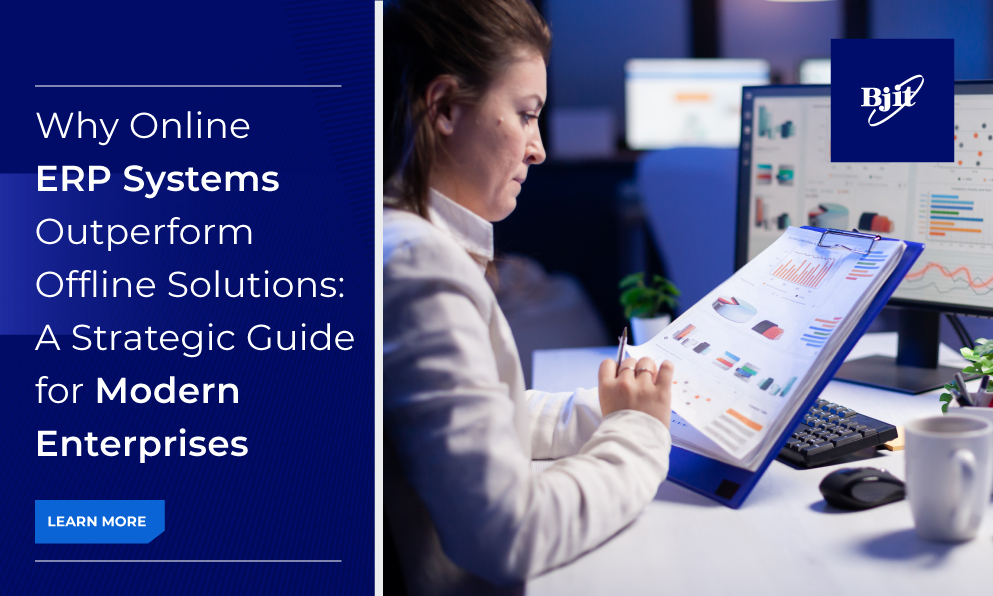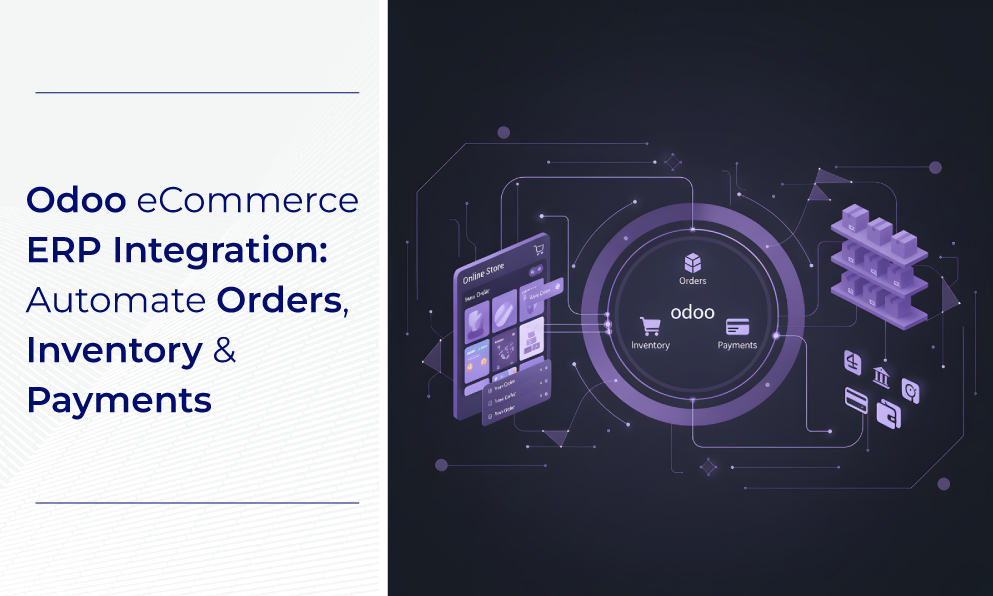In the age of experiential retail and evolving customer expectations, hybrid businesses like café-bookstores, gourmet grocers, and boutique-lifestyle stores are gaining popularity. These establishments not only offer products but also immersive customer experiences. Yet behind the scenes, business owners often struggle with complex operations—separate inventory systems, disconnected sales platforms, and fragmented customer databases.
Most traditional POS solutions are ill-equipped for this complexity. However, Odoo, with its flexible and modular ERP design, offers a game-changing alternative. When implemented by expert service providers like BJIT, hybrid businesses can finally manage all retail and food & beverage (F&B) operations through a single, intelligent platform.
The Operational Challenge of Hybrid Businesses
Running a hybrid concept—like a café merged with a bookstore or a lifestyle store with a juice bar—means juggling two (or more) distinct business models. A traditional retail POS can't handle table orders, kitchen instructions, or tips. Conversely, a restaurant POS typically lacks inventory barcoding, stock aging reports, and detailed vendor procurement features.
This creates a disjointed tech stack that requires manual syncing, increasing the risk of errors, data silos, and administrative overhead (Kaplan, 2020). The result? Inefficient workflows, poor inventory visibility, and diminished customer experience.
Why Odoo Stands Out: Modular, Unified, and Scalable
Odoo resolves this complexity with a single, cloud-based ecosystem where every module—from POS to Inventory, Sales, Purchasing, and Human Resources—connects within the same database. This eliminates redundancies and empowers business owners to make data-driven decisions (Jones, 2021).
Some key Odoo modules used in hybrid businesses include:
- POS Restaurant: Enables floor plan customization, split billing, order modifiers, kitchen printers, and time-based promotions.
- POS Retail: Includes barcode scanning, product categorization, customer loyalty systems, and gift card support.
- Inventory: Real-time stock updates with batch and serial tracking.
- Sales and Accounting: Integrated invoicing, tax calculations, and payment reconciliation.
- Purchasing: Automated RFQs, supplier price lists, and drop-shipping support.
- HR & Attendance: Clock-in/clock-out tracking, shift planning, and payroll.
Odoo also offers Odoo Studio, enabling no-code customizations to screens, reports, and workflows—a feature extensively leveraged by BJIT for clients with specific localization or industry requirements.
Use Case: The Café-Bookstore Model
Take, for instance, a business like “I'm Thirsty”, a concept café-bookstore in Hong Kong (Odoo, 2023). This business uses Odoo to run two distinct POS terminals on separate floors: one for F&B, and one for retail. Each POS interface is configured with tailored menus, categories, and payment settings, while both connect to a single database.
Benefits include:
- Unified reporting on total sales and profits.
- Centralized customer database for loyalty tracking.
- Shared inventory records across both store types.
- Single sign-in access for employees across departments.
Thanks to AsiaPay and FPS QR Code integrations, “I'm Thirsty” accepts multiple local payment options, widening its customer base. BJIT ensures these integrations run smoothly and remain compliant with local financial regulations.
Enhanced Customer Experience Through Automation
Customers today expect fast, seamless, and personalized service. Odoo supports this by offering:
- Multi-channel loyalty programs: Earn and redeem points in the café or bookstore.
- Promotions engine: Apply happy-hour discounts, bundle deals, or membership perks.
- Digital receipts: Email receipts with links to feedback forms or online offers.
- Customer profiles: Centralized view of past purchases and preferences.
BJIT enhances this further by integrating Odoo with marketing automation platforms. This allows businesses to send follow-up offers, birthday vouchers, or restock alerts—resulting in improved customer retention (Martinez, 2022).
Smarter Inventory Management
Inventory in a hybrid store varies widely—from perishable food items to long-life retail products. Odoo provides:
- Real-time inventory updates: Each sale or return automatically updates inventory counts.
- Expiry date tracking: Ideal for food, drinks, or cosmetics.
- Reordering rules: Auto-generates RFQs when stock levels fall below safety thresholds.
- Multiple warehouse locations: Track inventory at the café counter, bookstore stockroom, and remote warehouse.
With BJIT, businesses can further automate inventory audits and even deploy barcode scanning via mobile apps, improving accuracy and staff productivity.
HR and Workforce Optimization
Hybrid businesses often rely on a mix of part-time and full-time staff with variable schedules. Odoo HR simplifies staff management through:
- Digital attendance logs: Employees clock in/out using tablets or PINs.
- Timesheets: Automatically calculate hours worked, overtime, and breaks.
- Payroll integration: Connect with payroll apps for monthly salary disbursements.
- Leave management: Approvals for vacations or sick days within a centralized dashboard.
BJIT provides onboarding support and training, helping businesses adopt Odoo HR with minimal disruption.
Mobile, Cloud-Based, and Secure
Odoo is built on a cloud-based architecture, which ensures:
- Anywhere access: Manage your business from a laptop, tablet, or phone.
- Automatic backups: Reduce the risk of data loss or corruption.
- Bank-level security: Safeguard financial transactions and customer data.
- Scalability: Add more POS terminals, store locations, or modules as you grow.
BJIT’s cloud engineering expertise guarantees that businesses receive tailored cloud hosting solutions, either on Odoo.sh or AWS/Azure, depending on regional preferences.
Multi-Location and Franchise Support
For businesses expanding to multiple outlets or launching a franchise model, Odoo offers:
- Multi-company support: Each outlet can have its own accounting and sales reports.
- Shared resources: Centralize procurement while allowing local POS independence.
- Data visibility: HQ gets a bird’s-eye view, while store managers access only relevant data.
BJIT works with clients to deploy enterprise-scale rollouts, often integrating third-party tools such as Salesforce, SAP, or Power BI as needed.
Seamless E-Commerce Integration
Many hybrid businesses operate both physical and online stores. Odoo's eCommerce module connects with the POS system, offering:
- Unified inventory management: Avoid overselling by syncing stock between POS and online store.
- Click-and-collect: Customers can order online and pick up from the café or store.
- Customer portal: Let customers view order history, invoices, and returns online.
- Omnichannel marketing: Sync customer data across email, SMS, and web ads.
BJIT has implemented multi-language, multi-currency eCommerce solutions using Odoo for international clients, enabling a unified global-local strategy.
World-Class Support
While Odoo offers 24/7 support via its global team and AI-powered documentation, implementation partners like BJIT provide the personalized, region-specific service businesses need.
BJIT offers:
- Localized deployment in APAC, Europe, and North America
- Custom module development
- Training sessions for staff
- Post-implementation support and optimization
Having offices across multiple regions, BJIT ensures clients always have access to support aligned with their time zones and languages.
Conclusion
Hybrid businesses are redefining the retail and hospitality landscape. However, managing these models without the right technology leads to inefficiencies, poor customer experiences, and growth barriers.
Odoo offers a unified, flexible, and intelligent platform that brings together all aspects of business—from front-end POS to backend logistics and employee management. With BJIT as your strategic implementation partner, you not only get a robust ERP solution but also a team that understands your industry, your market, and your growth goals.
Whether you're launching your first concept store or scaling across cities, Odoo with BJIT provides the digital foundation to power your success.
References
Jones, P. (2021). Retail and Restaurant Integration: Modern ERP Trends. Journal of Integrated Business Systems, 27(2), 100–117.
Kaplan, M. (2020). The Hidden Cost of POS Fragmentation in Retail. Journal of Retail Tech, 18(1), 56–65.
Martinez, L. (2022). Workforce Optimization in Hospitality through ERP. International Journal of Human Capital Management, 36(3), 72–89.
Odoo. (2023). Customer Success Story: I’m Thirsty Café Bookstore. Retrieved from https://www.odoo.com/blog/customer-reviews-6/i-m-thirsty-a-concept-cafe-bookstore-in-hong-kong-1035
Smith, R. (2021). ERP Systems for Blended Businesses. Tech Solutions Quarterly, 15(4), 120–136.











